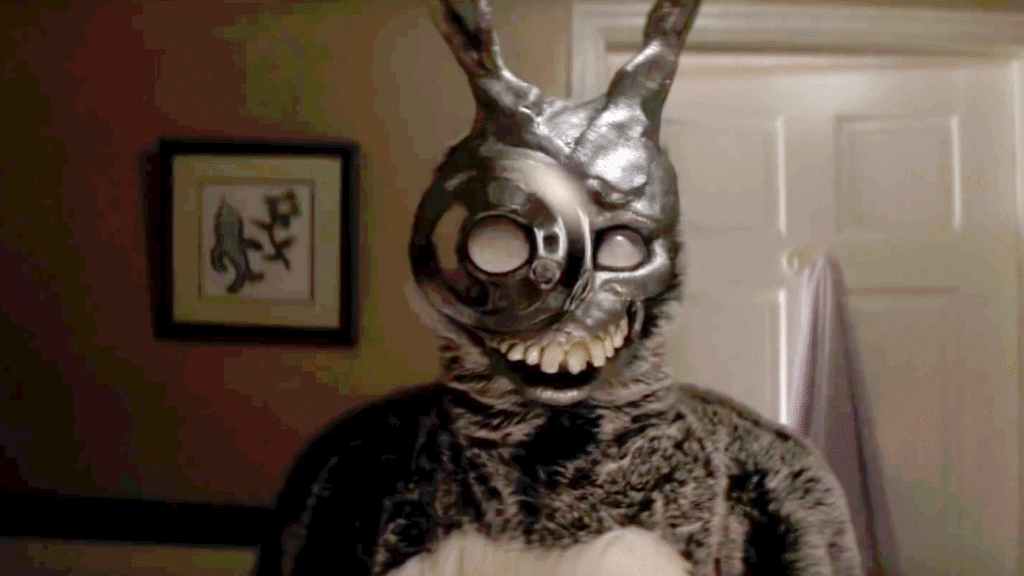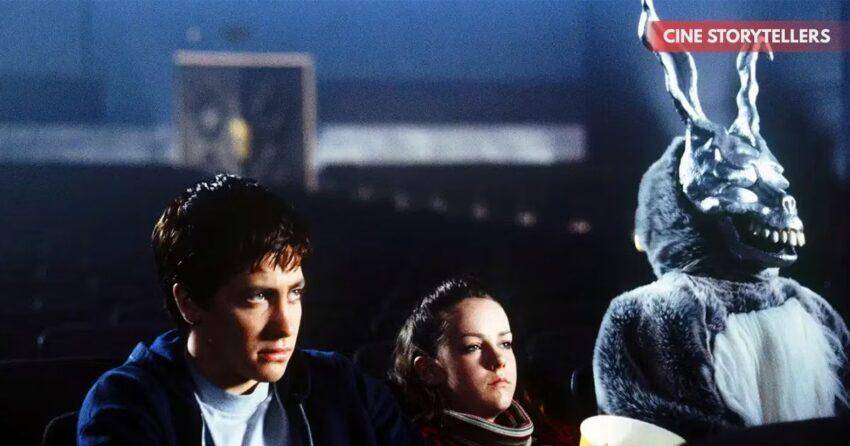When Donnie Darko was first released in 2001, it struggled at the box office but quickly became a cult favorite thanks to its haunting themes, surreal storytelling, and mind-bending ending. In 2004, writer-director Richard Kelly revisited his masterpiece, releasing Donnie Darko: The Director’s Cut — a version that aimed to clarify the story while expanding on the film’s mysterious universe.
Today, more than two decades later, fans still debate which version reigns supreme. Let’s dive deep into what makes the Director’s Cut so fascinating and how it changed the Donnie Darko experience forever.
A Quick Recap: What Is Donnie Darko About?

Set in 1988, the film follows Donnie (Jake Gyllenhaal), a troubled teenager who begins experiencing strange visions after narrowly escaping death. Guided by a mysterious figure in a creepy rabbit costume named Frank, Donnie grapples with time travel, destiny, and mental illness — all while trying to understand the meaning of life and death.
The movie mixes elements of science fiction, horror, and psychological drama. Its layered narrative and cryptic symbolism made it an enduring favorite for fans who love to analyze and decode stories.
Why Richard Kelly Created the Director’s Cut
Richard Kelly felt that the original theatrical cut didn’t fully express his vision. Limited by time constraints and studio pressures, some of his deeper philosophical ideas were left out. When the film gained cult popularity on DVD, Kelly seized the opportunity to expand on his story.
The Director’s Cut, released in 2004, included:
- 20 additional minutes of footage
- Restored deleted scenes
- New special effects and sound design
- Reordered music tracks
- Text pages from The Philosophy of Time Travel — a fictional book central to the plot
Kelly wanted to give audiences a clearer understanding of the science fiction framework behind Donnie’s visions and time loops.
Key Differences Between the Theatrical and Director’s Cuts
1. Extended Runtime and Added Scenes
The Director’s Cut runs around 133 minutes — roughly 20 minutes longer than the theatrical version. These additional scenes provide deeper context for Donnie’s relationships, particularly with his therapist, parents, and Gretchen.
2. The Philosophy of Time Travel Explained
Perhaps the most notable change is the inclusion of excerpts from The Philosophy of Time Travel, the in-universe book written by Roberta Sparrow. These on-screen text pages break down complex concepts like “Tangent Universes” and “Living Receivers,” making the plot’s time-travel mechanics more explicit.
3. Music Changes
One controversial change involves the soundtrack. The Director’s Cut replaces some of the beloved 1980s songs that defined the film’s original tone. For example, the iconic use of Echo & The Bunnymen’s “The Killing Moon” in the opening scene was replaced with INXS’s “Never Tear Us Apart.” While Kelly claimed this was his original intent, many fans still prefer the theatrical soundtrack for its emotional resonance.
4. Improved Visuals and Effects
The Director’s Cut features subtle but noticeable updates to visual effects, particularly during the time-manipulation sequences. The “liquid spears” that show people’s future paths were enhanced for clarity and style.
5. More Explicit Narrative Clarity
The theatrical cut left much of the story open to interpretation, while the Director’s Cut explains the mechanics of Donnie’s world more directly. Some fans appreciate the added clarity; others believe it removes the film’s haunting ambiguity.
Critical Reception: Divided Opinions
When released, Donnie Darko: The Director’s Cut received mixed reactions. Critics acknowledged its ambition but felt that explaining too much stripped away the mystery that made the original so compelling.
Publications like Variety and Empire praised the extended visuals but noted that the original’s ambiguity was part of its charm. Fans remain divided — some hail the Director’s Cut as the “true version,” while others argue that it overexplains the enigma.
The Legacy of Donnie Darko and Its Director’s Cut
Despite differing opinions, the Director’s Cut solidified Donnie Darko’s place in cinematic history. It inspired endless theories, academic essays, and online debates. The film’s themes — fate, mental illness, alternate realities, and the burden of knowledge — continue to resonate deeply.
Moreover, the Director’s Cut paved the way for re-examining misunderstood movies, proving that alternate cuts can completely redefine a story’s meaning.
Jake Gyllenhaal’s Defining Role
Jake Gyllenhaal’s haunting performance as Donnie remains one of his most iconic roles. The Director’s Cut showcases more of his emotional range, particularly in scenes dealing with therapy, paranoia, and existential dread. His portrayal helped catapult him to stardom, leading to acclaimed roles in Nightcrawler, Zodiac, and Prisoners.
Why Fans Still Love Both Versions
While the two cuts offer different experiences, both are essential pieces of Donnie Darko’s legacy. The theatrical cut invites interpretation and discussion, while the Director’s Cut offers answers for those who crave structure. Together, they form a rare cinematic duality — one that reflects the film’s own themes of time, destiny, and alternate possibilities.
Conclusion: Which Version Should You Watch?
If you’re new to Donnie Darko, start with the theatrical version to experience the mystery as audiences did in 2001. Then watch the Director’s Cut to explore Kelly’s expanded vision.
Both versions deserve their place in film history — one enigmatic, the other enlightening — making Donnie Darko one of cinema’s most fascinating paradoxes.
Also Read : Brad Pitt Confesses Which Female Co-Stars Left Him Starstruck
FAQs
1. What is the main difference between Donnie Darko and its Director’s Cut?
The Director’s Cut adds 20 minutes of new scenes, expanded explanations from The Philosophy of Time Travel, and updated sound and visual effects.
2. Why do some fans prefer the original version?
Many believe the theatrical cut’s ambiguity enhances its mystery, allowing viewers to form their own interpretations.
3. Is the Director’s Cut considered canon?
Yes, according to Richard Kelly, it represents his intended version of the film.
4. Does the Director’s Cut change the ending?
No, the ending remains the same, but added context makes Donnie’s sacrifice more understandable.
5. Where can I watch the Donnie Darko Director’s Cut?
It’s available for streaming and on Blu-ray, often included in collector’s editions or anniversary box sets.
Join our WhatsApp channel for more updates and information about celebrities and entertainment
Discover more from Cine Storytellers
Subscribe to get the latest posts sent to your email.
